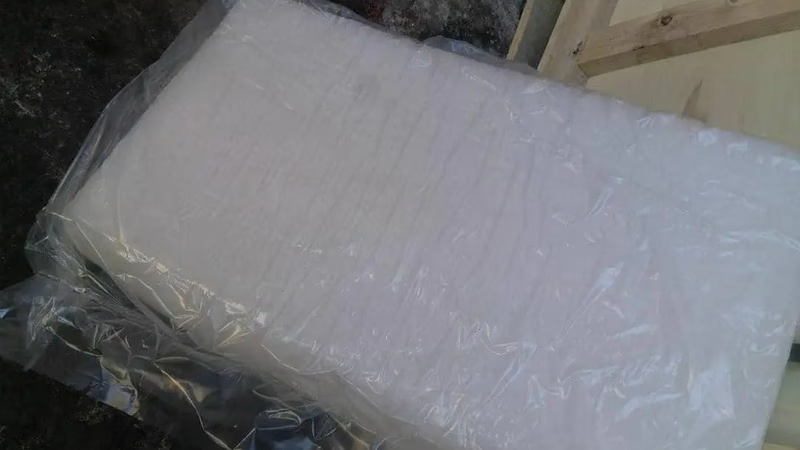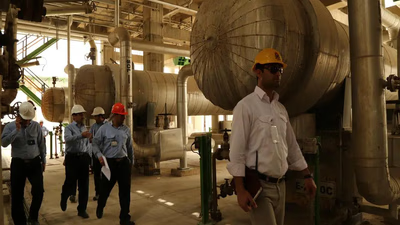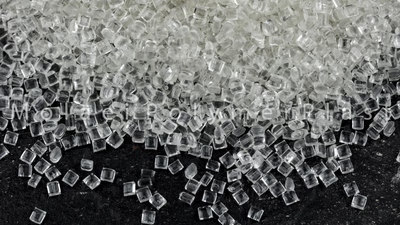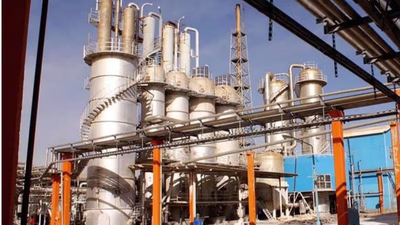
Polybutadiene production facilities enhance trade opportunities.
The Middle East is home to abundant petroleum and natural gas reserves, making it a major global player in the petrochemical industry. The region has heavily invested in developing petrochemical complexes and manufacturing hubs. This has resulted in the establishment of integrated facilities for producing a wide range of chemicals, polymers, and rubber-related products, including PBR. The availability of petrochemical feedstocks at competitive prices in the Middle East provides a favorable environment for the production of PBR. The Middle East region has access to ample supplies of butadiene, a key raw material for producing PBR. Butadiene is derived from the cracking of naphtha or other petroleum fractions, and the Middle East's abundant petroleum resources ensure a stable supply of this feedstock. The proximity of PBR production facilities to the feedstock sources helps reduce transportation costs and enhances the competitiveness of PBR in the regional and global markets.
Several countries in the Middle East, such as Saudi Arabia, the United Arab Emirates (UAE), and Qatar, have established petrochemical complexes that include polymerization plants for the production of various rubber products. These facilities contribute to the regional production capacity of polybutadiene rubber. The Middle East has a strong petrochemical industry due to its abundant availability of petroleum and natural gas resources. This has led to the establishment of large-scale petrochemical complexes that manufacture a wide range of chemicals and polymers, including rubber. The production of PBR in the region is integrated with this petrochemical infrastructure.
The Middle East has been investing in research and development activities to enhance its petrochemical industry. This includes exploring new technologies and processes to produce advanced rubber materials, including PBR. These efforts aim to improve product quality, develop customized grades, and meet the evolving demands of different industries. Export of polybutadiene as one of the synthetic rubbers that has different applications in different industries. PBR polybutadiene is one of the types of synthetic rubber that has different types. The use of this rubber is common in low temperature conditions due to its compatibility with low temperatures.
Advantages of polybutadiene:
- It has water resistance as well as abrasion resistance and significant impact resistance.
- Another advantage is its resistance to oxidation and to acids and bases.
- This tire also shows good flexibility at low temperatures.
Disadvantages of polybutadiene:
- Low heat resistance
- Low oil resistance
- Low resistance to gasoline
- Unfavorable process ability
The Middle East has been actively investing in downstream industries to diversify its petrochemical portfolio and capture more value. This includes investments in rubber conversion industries, where PBR is further processed into various rubber products like tires, belts, hoses, and seals. By promoting the development of downstream industries, the Middle East enhances its capabilities to cater to both domestic and international markets with value-added rubber products.
The Middle East serves as an important exporter of polybutadiene rubber to global markets. The region's strategic location provides easy access to major shipping routes, enabling efficient export to various regions, including Asia, Europe, and Africa. PBR produced in the Middle East is utilized in various industries worldwide, such as automotive, construction, and consumer goods. The Middle East region also has a significant demand for polybutadiene rubber for domestic consumption. The growth of industries, such as automotive, construction, and manufacturing, drives the demand for rubber products within the region itself. The availability of PBR produced locally or in neighboring countries supports the region's industrial sectors.
Geographically, the Middle East is strategically located with easy access to major shipping routes and international markets. This advantageous position enables efficient export of PBR to various regions, including Asia, Europe, and Africa. The region's well-developed transportation infrastructure, including ports and logistics networks, facilitates the movement of PBR products, making it an attractive sourcing destination for global customers. The Middle East has experienced robust growth in various industrial sectors, such as automotive, construction, and manufacturing. These industries are significant consumers of rubber products, including PBR. The availability of PBR in the region supports the local demand for rubber materials, contributing to its market presence.
-

The Middle East is a key player in the global polybutadiene (PBR) market, leveraging its abundant petroleum and natural gas resources. The region has developed extensive petrochemical complexes that produce a variety of chemicals and polymers, including PBR. The availability of butadiene, a crucial raw material for PBR production, is ensured by the region"s rich petroleum reserves. This proximity to feedstock sources reduces transportation costs and enhances competitiveness in both regional and global markets. Countries like Saudi Arabia, UAE, and Qatar have established polymerization plants that contribute significantly to the production capacity of PBR. Investments in research and development are ongoing to improve product quality and meet industry demands. Polybutadiene is favored for its water resistance, abrasion resistance, and flexibility at low temperatures, making it suitable for various applications such as tires and seals. However, it has limitations including low heat resistance and unfavorable processability.
The Middle East also focuses on expanding its downstream industries to add value to its petrochemical offerings by processing PBR into finished rubber products. With strategic access to major shipping routes, the region efficiently exports PBR to markets in Asia, Europe, and Africa while also catering to domestic demand driven by growing automotive and construction sectors. "
-

Comprehensive knowledge of polybutadiene rubber (PBR) producers in West Asia is essential for traders to conduct effective market analysis. Understanding supply-demand dynamics, production capacities, and the competitive landscape allows traders to make informed decisions regarding pricing and sourcing. Key producers such as Sadara, Petro Rabigh, Borouge, and Qatar Petrochemical Company play significant roles in the region"s PBR market. With Sadara"s capacity at 150,000 metric tons per year and Petro Rabigh at 130,000 metric tons, these companies are crucial for meeting both domestic needs and export demands. The insights gained from knowing these producers enable traders to optimize their supply chains by identifying reliable suppliers and assessing production capabilities. Additionally, this knowledge opens up opportunities for market expansion by identifying emerging producers and new capacities. The recent establishment of a large butadiene unit is expected to generate significant revenue through exports to countries like Japan and China. Traders can leverage detailed information about PBR producers to stay updated on market trends, negotiate better contracts, and develop risk mitigation strategies against potential supply chain disruptions.
-

Polybutadiene rubber (PBR) is a synthetic polymer formed from butadiene monomers, characterized by its light yellow color and solid state. Its properties vary based on the configuration of double bonds during polymerization, influencing its applications in various industries. Safety considerations are crucial when handling PBR, as it can pose health risks if not managed properly. The material is stable under normal conditions but can catch fire at high temperatures (332 °C) and should be stored away from oxidizing agents. It is insoluble in water but soluble in organic solvents like hexane and toluene. Proper personal protective equipment (PPE) is recommended to prevent skin irritation and respiratory issues from inhaling rubber dust or fumes. Storage guidelines dictate that PBR should be kept in a cool, dry place, ideally below 30 °C, and away from heat sources. Packages must be transported according to shipping standards, ensuring they are placed on wooden pallets and stored in polyethylene containers. Disposal of PBR waste must comply with local regulations to prevent environmental contamination.
-

Polybutadiene rubber (PBR) is known for its high elasticity, resilience, and excellent abrasion resistance, making it ideal for various applications. It is extensively used in tire manufacturing, where it enhances performance by improving rolling resistance and traction. PBR"s durability and flexibility also make it suitable for conveyor belts, seals, gaskets, and vibration dampers in automotive and industrial settings. Its chemical resistance allows it to withstand exposure to oils and fluids, which is crucial for automotive components. Additionally, PBR is utilized in sporting goods like golf balls and tennis balls due to its resilience. The material"s low glass transition temperature ensures flexibility even in cold environments. PBR can be blended with other rubbers to tailor its properties for specific applications, enhancing its versatility across industries.
-

Polybutadiene rubber (PBR) is a synthetic elastomer derived from the polymerization of butadiene, a petroleum-based monomer. It is known for its high resilience, excellent abrasion resistance, and low glass transition temperature, making it suitable for various applications. PBR is predominantly used in the tire industry, accounting for over 70% of its consumption, where it enhances traction and durability. There are two main types of PBR: high cis and high trans, each offering different properties such as elasticity and stiffness. The material can be modified with additives to improve characteristics like oil resistance and heat stability. In addition to tires, PBR is utilized in industrial products such as conveyor belts, hoses, seals, and adhesives. Its versatility allows manufacturers to tailor its properties for specific applications by adjusting molecular structure or incorporating fillers like carbon black. The production process involves polymerization using catalysts and can be executed through various methods including solution or emulsion polymerization.
Overall, polybutadiene rubber"s unique properties contribute significantly to its widespread use across multiple industries. "





